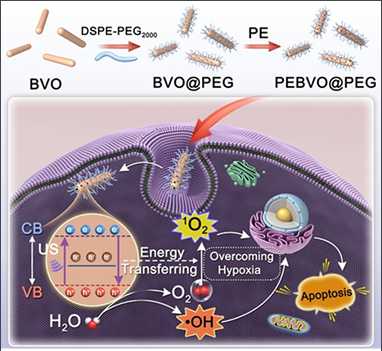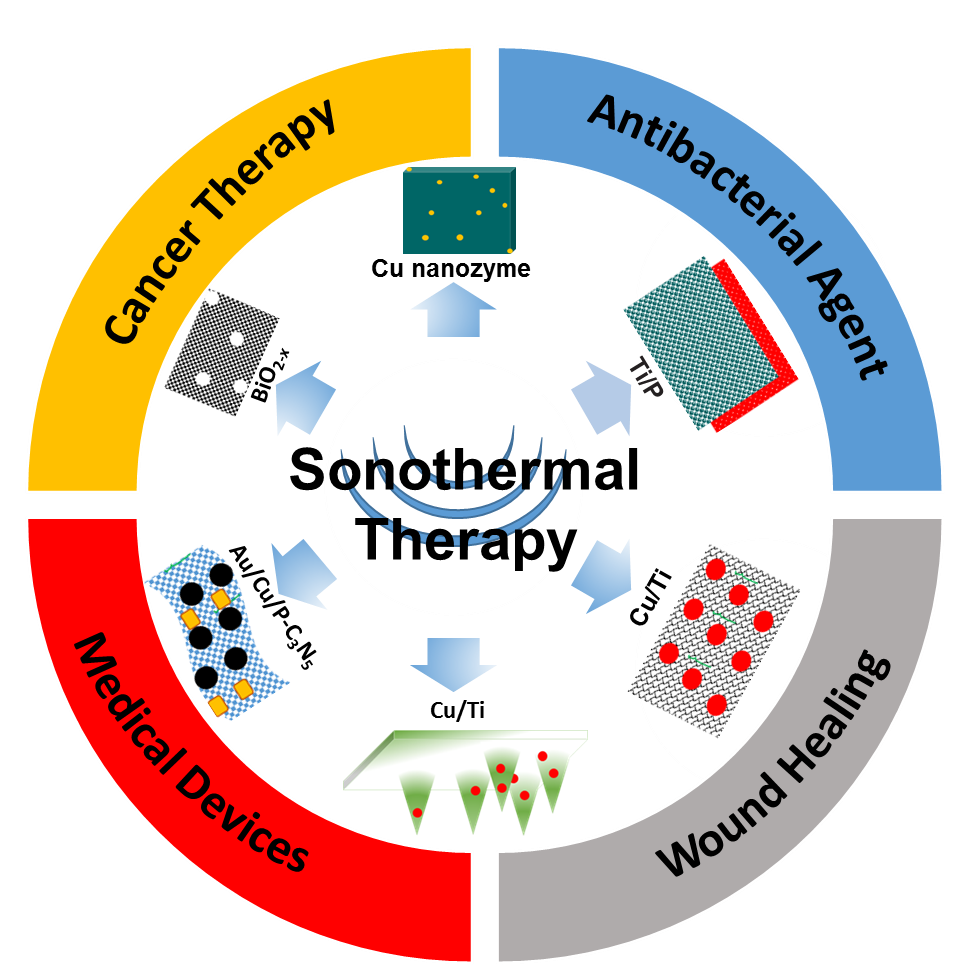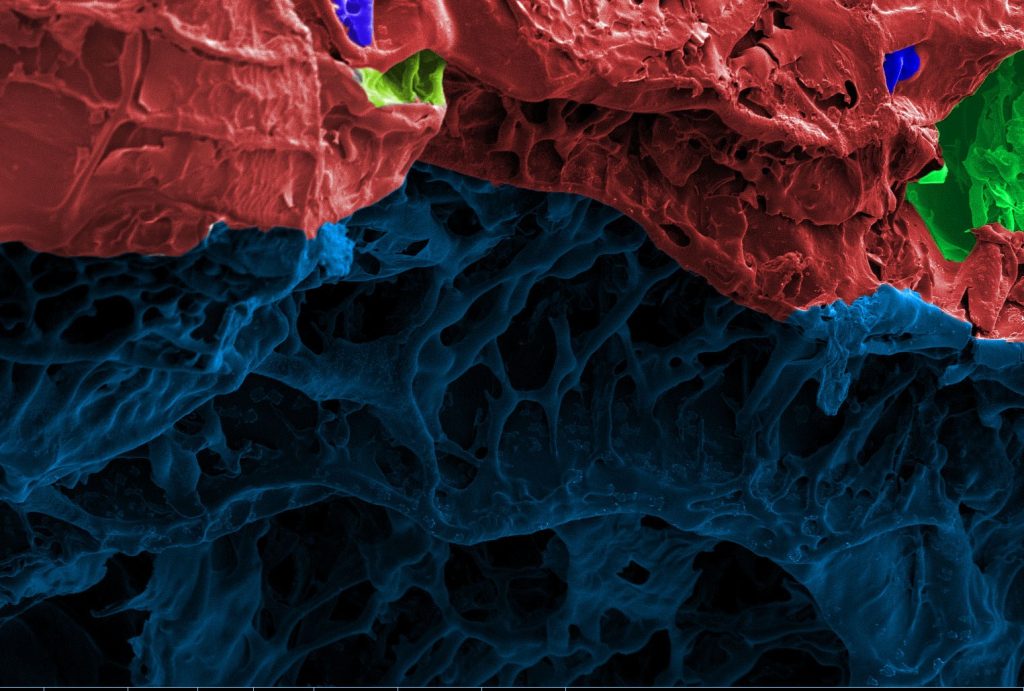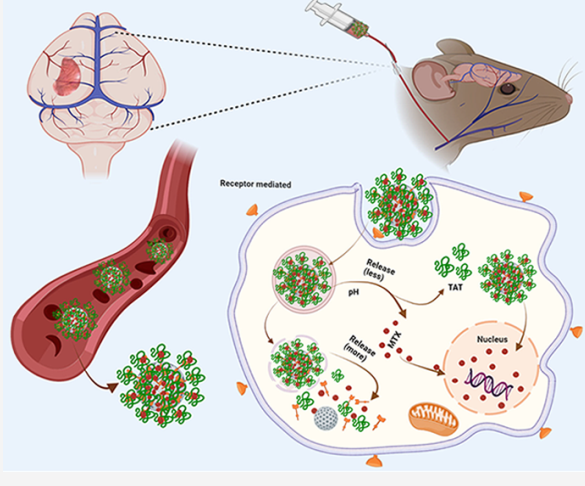Headed by Dr. Aziz Maleki, the NanoChemoBioMed research Group is grouped into several specialist research areas which include:
Infection Therapy
Skin lesions, including skin bacterial abscesses, have become one of the most important health challenges and usually need systemic high-dose antibiotics. Therefore, it is of particular importance to develop novel approaches for treating this ever-growing challenge to human health. To address this challenge, In 2024, we developed a rice shape copper nanostructure for photothermal and chemodynamic therapy focal infection. SEM images of Cu-Cys nanostructures are shown here. It was published in Adv. Therap.

Cancer Therapy
Owing to the high depth of tissue penetration, non-invasiveness, and controllability, ultrasound (US)-mediated sonodynamic therapy (SDT) has shown broad application prospects for tumor treatment. However, the electron-hole separation inefficiency of sonosensitizers and the tumor hypoxia remain two major challenges limiting the effect of SDT. In 2022, Our reseaech goup introduced an ultrafine photoetched bismuth vanadate (BiVO4) nanorods modified with DSPE-PEG2000 (PEBVO@PEG NRs) to achieve in situ self-supply of oxygen (O2) and reactive oxygen species (ROS) for hypoxic tumor therapy. The photoetching approach could enhance the charge separation by inducing enriched oxygen vacancies on the surface of BiVO4, thereby improving the generation efficiency of ROS and O2. The PEBVO@PEG overcome the main obstacles of traditional sonosensitizers in the SDT process and show promising sonodynamic therapeutic effects, thus providing new strategies for improving the performance of sonosensitizer and hypoxic tumor elimination.
It was published in Angewandte Chemie International Edition.
Conferring BiVO4 Nanorods with Oxygen Vacancies to Realize Enhanced Sonodynamic Cancer Therapy

In 2024, We published a review article entitled ” Engineered Nanostructures for Sonothermal Therapy” in Advanced Functional Materials.

Tissue engineering
In tissue engineering, wound healing remains a significant challenge worldwide, necessitating the development of new wound dressings to aid in the healing process. In 2023, we introduced a novel photothermally active hydrogel that contains platelet-rich plasma (PRP) for infected wound healing. The hydrogel was formed in a one pot synthesis approach by mixing alginate (Alg), gelatin (GT), polydopamine (PDA), and PRP, followed by the addition of CaCl2 as a cross-linker to prepare a multifunctional hydrogel (AGC–PRP–PDA). The hydrogel exhibited improved strength and good swelling properties. PDA nanoparticles (NPs) within the hydrogel endowed them with high photothermal properties and excellent antibacterial and antioxidant activities. Moreover, the hydrogels sustained the release of growth factors due to their ability to protect PRP. The hydrogels also exhibited good hemocompatibility and cytocompatibility, as well as high hemostatic properties. In animal experiments, the injectable hydrogels effectively filled irregular wounds and promoted infected wound healing by accelerating re-epithelialization, facilitating collagen deposition, and enhancing angiogenesis. The study also indicated that near-infrared light improved the healing process. Overall, these hydrogels with antibacterial, antioxidant, and hemostatic properties, as well as sustained growth factor release, show significant potential for skin regeneration in full-thickness, bacteria-infected wounds. It was published in Biomaterials Science.

Drug Delivery Systems
Nanoparticle-based drug delivery systems (NDDSs) such as gold nanoparticles, lipid-based nanoparticles, polymeric micelles, mesoporous silica nanoparticles (MSNs), and liposomes can cross the BBB. In 2023, our laboratory introduced mesoporous silica nanoparticles (MSNs)-based drug delivery system was synthesized and conjugated with TAT peptide to enhance targeting of the brain tissue for enhancing the permeability of methotrexate across the blood-brain barrier and its uptake by cancer cells. The nanosystem was pH-responsive and utilized a cell-penetrating peptide (TAT) for permeating the brain parenchyma. It was published in Mol. Pharmaceutics.

